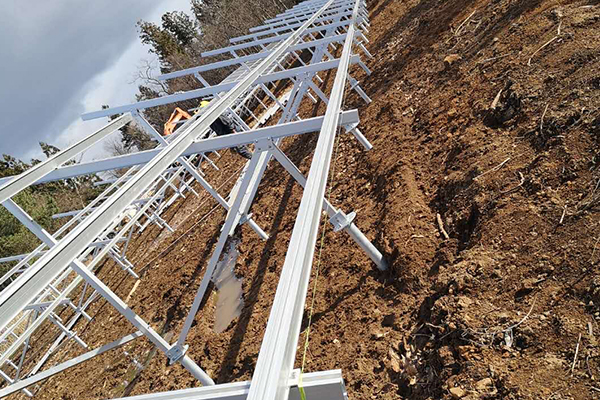To check whether the grounding system of solar panels is working properly, you can start from the following aspects:
1. Visual Inspection:
– Grounding Conductor: Carefully check the grounding conductors made of copper or other materials that connect the solar panels, the installation structure, and the grounding electrode. If there are rust spots of green, black, or other abnormal colors on the surface of the conductor, it indicates that corrosion has occurred, which may affect the conductivity. At the same time, check whether there are signs of damage, breakage, or wear on the conductor. If such problems are found, the current transmission path may be blocked.
– Connection Points: Check all connection points, including the connection between the solar panels and the grounding conductor, the connection between the grounding conductor and the installation structure, and the connection between the grounding conductor and the grounding electrode. Check whether the bolts and nuts at the connection points are loose. If they are loose, it may lead to poor contact and affect the grounding effect. In addition, pay attention to whether there are traces of overheating and discoloration at the connection points. Overheating may mean that the resistance here is too high and the current transmission is not smooth.
2. Ground Resistance Testing:
– Using Professional Instruments: Use a ground resistance tester for testing. Connect the grounding pole of the tester to the grounding electrode of the solar panels and perform the measurement according to the operation instructions of the instrument. Generally speaking, the ground resistance of the grounding system of solar panels should meet the requirements of local electrical codes, usually less than 4 ohms. If the measurement result is greater than this value, it indicates that the ground resistance is too high, and there may be problems with the grounding system, such as insufficient embedding depth of the grounding electrode, too high soil resistivity, or poor grounding connection.
3. Leakage Current Detection:
– Leakage Current Tester: Use a professional leakage current tester and touch its probes to the metal frame of the solar panels, the installation structure, and nearby parts that may be charged respectively. Under normal circumstances, the tester should not emit an alarm signal. If the tester detects a leakage current, it means that the grounding system has not effectively conducted the leakage current into the ground, and there may be problems such as insulation damage or interruption of the grounding connection.
4. Electrical Performance Monitoring:
– System Operation Parameters: By monitoring parameters such as the power generation, output voltage, and current of the solar panel system, the normality of the grounding system can be indirectly judged. If there is a fault in the grounding system, it may lead to unstable electrical performance of the system. For example, the power generation suddenly drops, and the output voltage or current shows abnormal fluctuations. Compare with the parameter records during normal operation. If obvious deviations are found, the grounding system and other factors that may affect the electrical performance should be further investigated.
5. Analysis of Lightning Strike and Electrical Fault Records:
– Review of Historical Events: Review the lightning strike records in the area where the solar panel system is located and the electrical faults that have occurred in the system itself. If the system is damaged after a lightning strike, or if electrical faults occur frequently, such as inverter failures, circuit short circuits, etc., while other devices are normal, it may imply that the grounding system has not effectively played its protective role, and a comprehensive inspection and evaluation of it are required.

